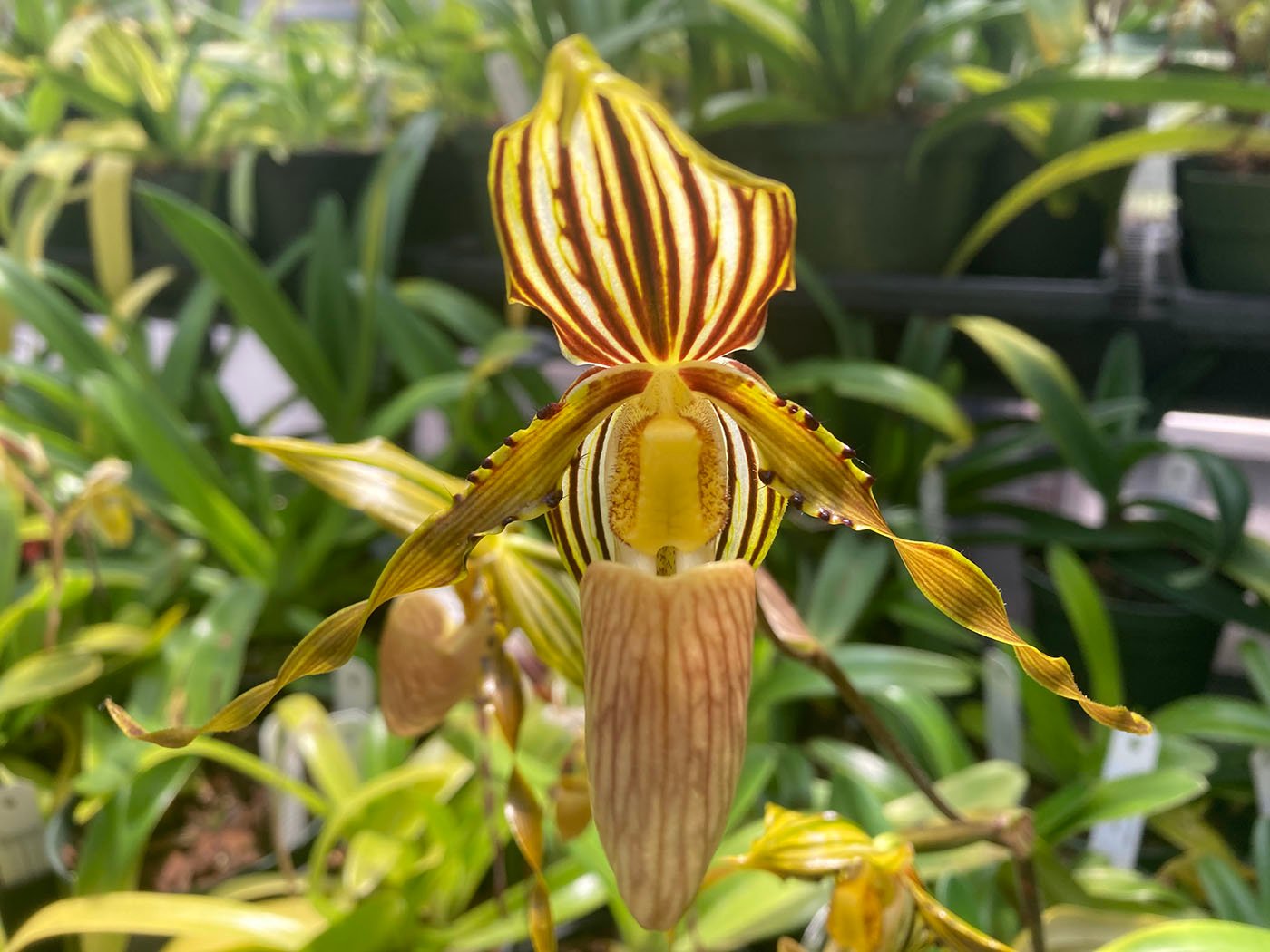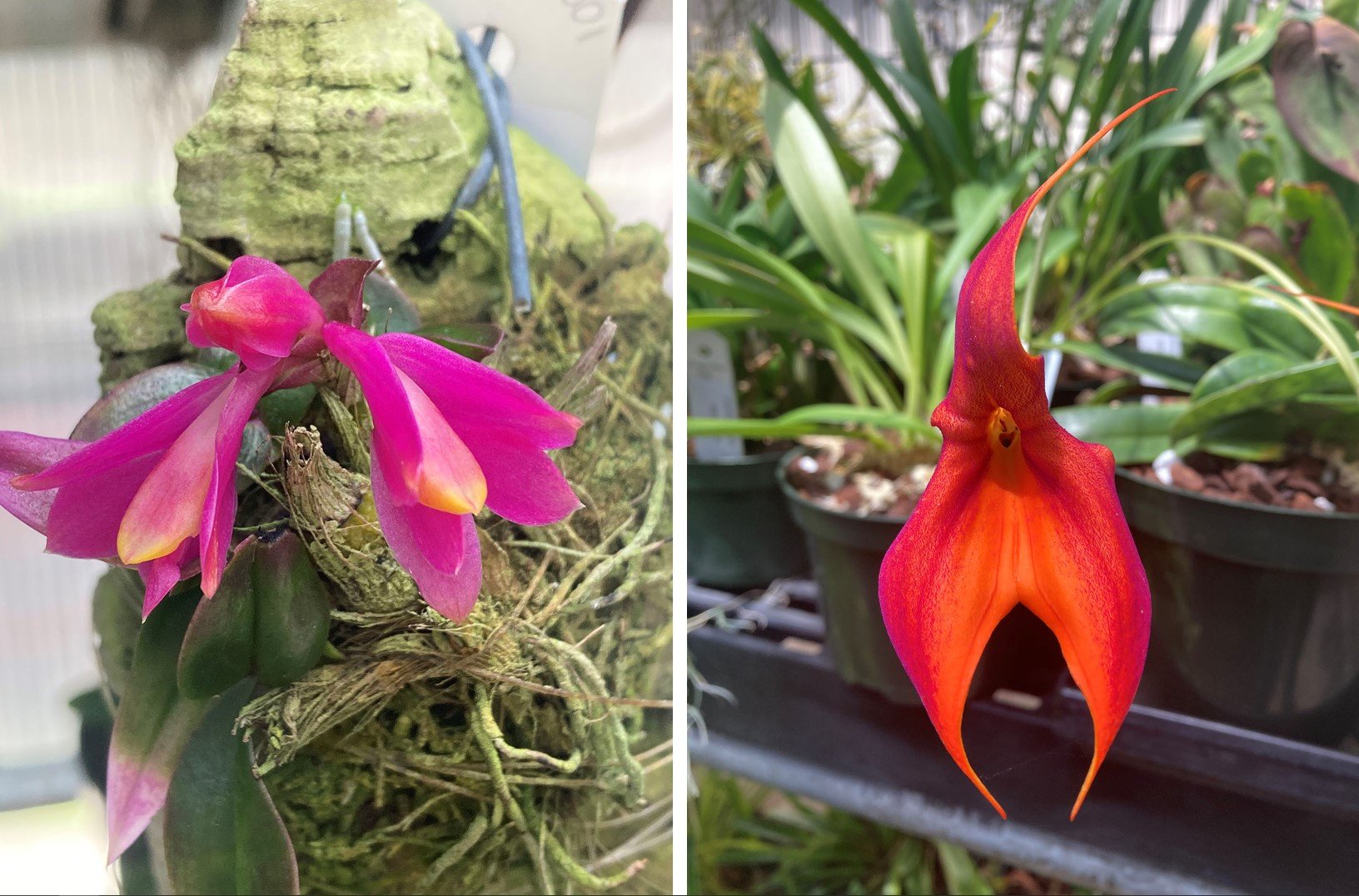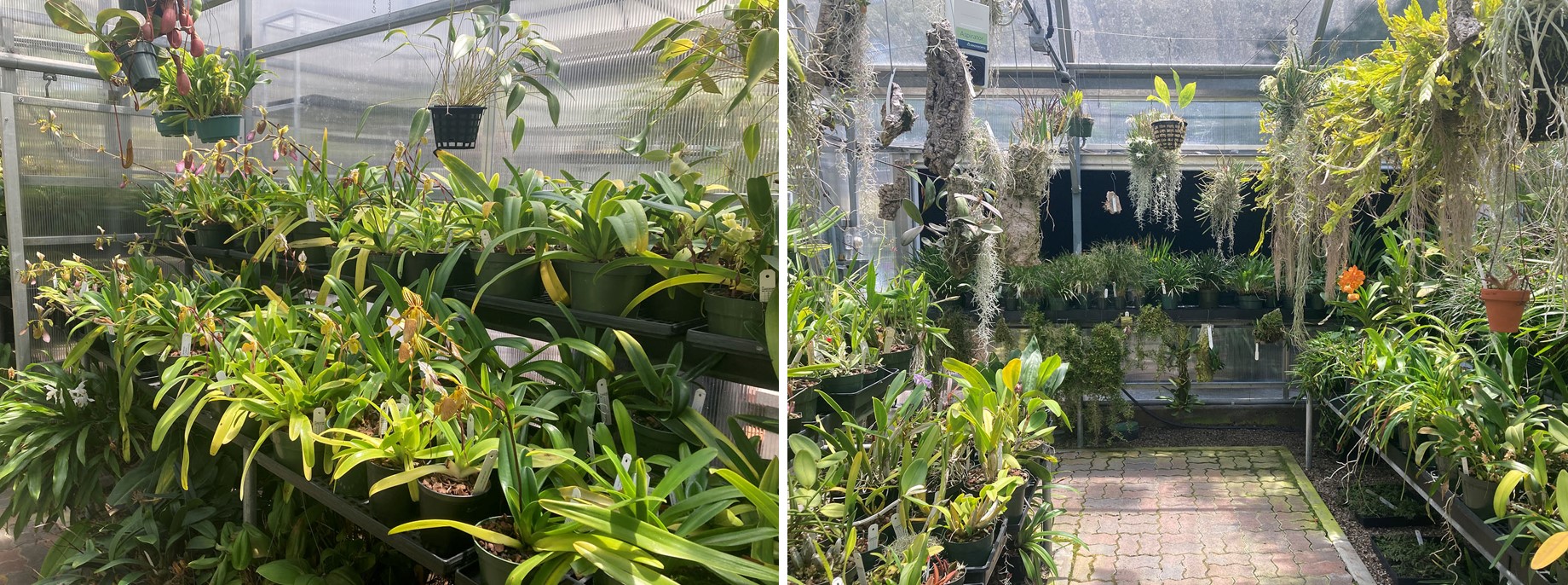
The Wild World of Orchids

Contributor
- Topics: Plants You Need
Summer 2022
As the world’s most diverse plant family, nothing can match the quantity and distribution of Orchidaceae. From the showy hybrids that we see at the grocery store to the native orchids growing in every state, orchids are all around us. Naturally growing on six continents, some orchids are even capable of growing above the Arctic Circle. Although it’s hard to pin down the exact number of species in this group, estimates put it around 28,000—and growing. Even at its lowest estimation, that’s more than all the bird and mammal species in the world combined. The variety of orchids is stunning as well, with some species producing flowers as small as the head of a pin, and others with flower spikes over seven feet long. It’s no wonder that orchids are one of the most popular and exciting plant groups for enthusiasts to collect.

If you’re a novice orchid collector, you may not know how to begin selecting orchids that are right for you. You may wonder, what is the difference between kite orchids (Masdevallia) and Venus slippers (Paphiopedilum)? Will hard water harm my orchids? Will my orchids survive outside in my climate? What repotting mixture should I use? There are a million questions, and it’s easy to go down the rabbit hole of misinformation on the internet. (For example, never apply ice directly to the roots of your tropical orchid!)

Right: King of the Masdevallia’s (Masdevallia veitchiana) native to Peru in bloom . Credit: Adam Graves
For new orchid growers, a good recommendation is to start simply with hardy hybrids to ease yourself into orchid care. Most commercially grown hybrids are moth orchid (Phalaenopsis) crosses; these are the plants you see at big-box stores. These plants are quite happy to be indoors in bright indirect light, year-round. Give them semiregular water with good drainage, and avoid watering the leaves or flowers. Orchids always appreciate purified water, though some can thrive on tap water—if local tap water does not have high levels of total dissolved solids (“hard” water). Most importantly, remember that once the flowers are gone, the orchid is not dead—it is merely dormant or growing vegetatively. It will be quite happy to stick around and produce more flowers next year with minimal care.

Right: A purple Vanda orchid hybrid. Credit: Adam Graves
Once you feel comfortable with the basics, it’s tempting to branch out and start caring for some of the rarer species of orchids available for purchase online through specialty nurseries, hobbyist groups, or individual resellers. This is where the world of widespread illegal orchid trade can rear its head, and consumer activism can make a difference.
Orchids are one of the plant groups most in need of conservation and protection. Because many orchids have natural ranges that are extremely small, they are often uniquely vulnerable to disruptions in their habitat. With the high number of orchid species, it is difficult to quickly assess exactly which species are most at risk—in fact, only about 5 percent of orchid species have had their conservation need assessed officially by the International Union for Conservation of Nature (IUCN) Red List of Threatened Species. Because of this, there is a real risk of rare and endangered orchid species disappearing before we ever have a chance to study or preserve them. Climate change, urbanization, invasive species and—most importantly—illegal trafficking put many of these species at risk of extinction in the next 50 to 100 years.

Right: A rare leafless Ghost Orchid (Dendrophylax lindenii) about to bloom. Credit: Adam Graves
The myriad threats can be so overwhelming, one can be forgiven for wondering whether we can do anything as individuals to preserve the diversity and integrity of these incredible plants. Luckily, a small amount of research when purchasing an orchid can reduce illegal harvesting and trafficking. Commercially grown hybrids are always a safe purchase, but all true species of orchids are protected by international regulations established through the Convention on International Trade in Endangered Species of Wild Fauna and Flora (CITES). It is illegal to transport orchids across any borders without the proper permits and paperwork. If plants do not have the appropriate paperwork, there is a risk that they are contributing to illegal wildlife trade, and the shipment can be intercepted and confiscated by the US Fish and Wildlife Service. These confiscations are either returned to their home country or sent to a plant rescue facility. These facilities, such as the San Diego Zoo, care for these confiscations and use them to help further plant conservation and preservation projects.

Right: A wide variety of orchids at the Plant Rescue facility at San Diego Zoo. Credit: Adam Graves

Right: Phragmipedium Warscewiczianum native to Colombia, an orchid biodiversity hotspot, in the San Diego Zoo Plant Confiscation Facility. Credit: Adam Graves
If you’re interested in ethical purchases of unique or exotic orchids, here are some things to keep in mind:
- Never purchase orchids that are purported to be collected from the wild. These are universally protected through international law.
- If it’s not clearly stated, request paperwork from the seller that confirms legal authority to ship orchids across borders. Usually this will be CITES documentation or a phytosanitary certificate.
- Avoid purchasing from individual sellers through social media or other avenues that are difficult to trace.
By following these guidelines, you will be able to grow your orchid collection in an ethical way. By supporting sustainable and reputable nursery practices, you can help support global conservation goals and make sure that these amazing plants are still around to delight future generations.










Responses